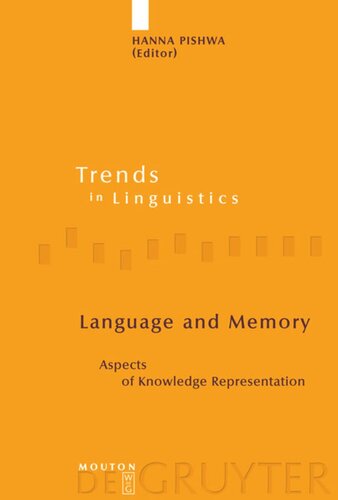

Most ebook files are in PDF format, so you can easily read them using various software such as Foxit Reader or directly on the Google Chrome browser.
Some ebook files are released by publishers in other formats such as .awz, .mobi, .epub, .fb2, etc. You may need to install specific software to read these formats on mobile/PC, such as Calibre.
Please read the tutorial at this link: https://ebookbell.com/faq
We offer FREE conversion to the popular formats you request; however, this may take some time. Therefore, right after payment, please email us, and we will try to provide the service as quickly as possible.
For some exceptional file formats or broken links (if any), please refrain from opening any disputes. Instead, email us first, and we will try to assist within a maximum of 6 hours.
EbookBell Team

4.0
26 reviewsThis volume presents an entirely new, expanded cognitive view of language by examining linguistic structure and its use in communication from the point of view of memory, thus providing a novel way of analysing language. The fourteen chapters, authored by linguists and psychologists, show the need for such an approach and illustrate that the properties of numerous linguistic structures reflect those of memory in various ways. Many different methodologies are presented because of the interdisciplinary nature of the volume, without reducing the comprehensibility and comparability of the contributions. Core linguistic areas are discussed in the contributions embracing syntax, semantics, pragmatics, and discourse analysis; psychological aspects are restricted to memory systems and their properties.
The introduction provides a concise overview of memory, and then three sections examine linguistic phenomena from various angles relating them to memory. In the first section, the contributions emphasize the issue of syntagmatic vs. paradigmatic organization in various linguistic phenomena with a focus on syntax and their locus in memory. The contributions in the second part investigate structures with non-fixed functions showing that they tend to be connected to a certain submemory sharing their features such as subjectivity and evaluation. The concern of the last section is discourse comprising coherence, evidentiality, politeness, and persuasion.
The book should be stimulating for researchers and students of linguistic core areas as well as those occupied with developmental aspects and theoretical aspects of language. It also provides new insights into methods of analysis both in linguistics and in cognitive psychology. The individual chapters are comprehensible to linguists who have no background in psychology and to psychologists who have to background in linguistics.